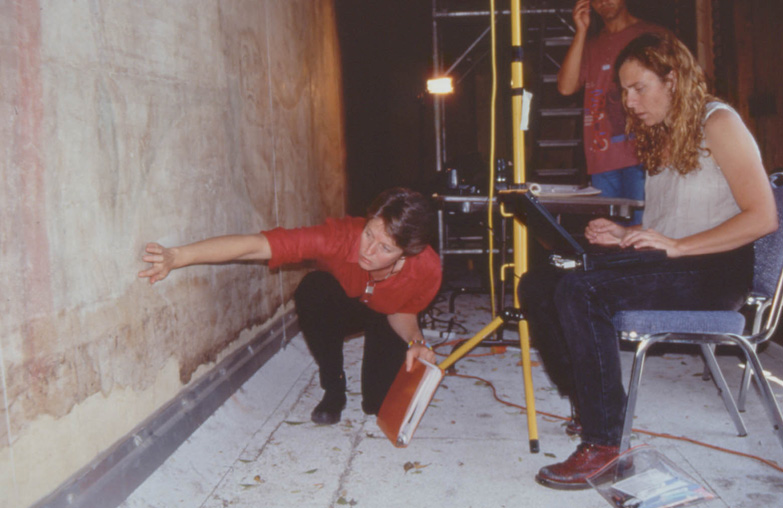Authors: Mitchell Hearns Bishop, Giancarlo Buzzanca, Gaetano Palumbo, Leslie Rainer, in New techniques for old times, CAA 98 : computer applications and quantitative methods in archaeology ; proceedings of the 26th Conference, Barcelona, March 1998 / edited by Juan A. Barceló, Ivan Briz, Assumpció Vila.Computer Applications in Archaeology Conference (26th : 1998 : Barcelona, Spain)Oxford : Archaeopress, 1999.
The Getty Conservation Institute, in collaboration with El Pueblo Historic Park in Los Angeles, is carrying out the conservation of David Alfaro Siqueiros’ mural, America Tropical, in downtown Los Angeles. The mural, painted in 1932, is located on an exterior second story wall of the Italian Hall on Olvera Street, El Pueblo Historic Park, in downtown Los Angeles and measures 5.4 meters high by 24 meters wide. It depicts a crucified Indian figure on a double cross, surmounted by the American eagle, with guerrero figures pointing guns at the eagle, in a tropical landscape with pre-Columbian ruins.
At the time the content was considered politically controversial and the mural was whitewashed and left exposed to the elements for several decades.
Since the 1970’s, there has been an interest in the mural’s preservation, and it is now protected by a temporary shelter. However, due to long neglect, overpainting, and the damages of time, today the mural is a faded image of
the past and presents an appearance similar to that ofa wall painting in an archaeological context.
The project consists of the documentation and treatment of the mural, the construction of a protective shelter and an exhibit devoted to the artist’s life and work. Since the GCI’s involvement, preliminary scientific study of the mural was carried out in 1988, and in 1990 a first phase of conservation treatment took place. In 1993, a digital image capture was done by Eric
Lange, then a Fellow in the GCI’s Documentation Program. His work consisted of a precise digital image capture system which could then be manipulatedf or a number of computerized documentation purposes.
In Spring of 1997, GCI conservators conducted a condition survey of the mural in preparation for the construction of the shelter, viewing platform and prior to the final conservation. A customized AutoCAD menu was developed, which allowed the conservators to examine the mural and enter data directly into laptop computers on site using a mosaiced digital image of the mural as a base for graphic documentation. The menu customization was based on previous work done at the Istituto Centrale per il Restauro in Rome. This system facilitated data entry and enabled conservators unfamiliar with the use of AutoCAD to enter condition data. Direct “in situ ” data entry ensured control of the process by the conservators and eliminated the long, expensive and error prone process of copying manually produced, condition information into digitalform by staff not working on site.
The condition survey provided a baseline record of the condition of the mural and recorded previous conservation treatments.
